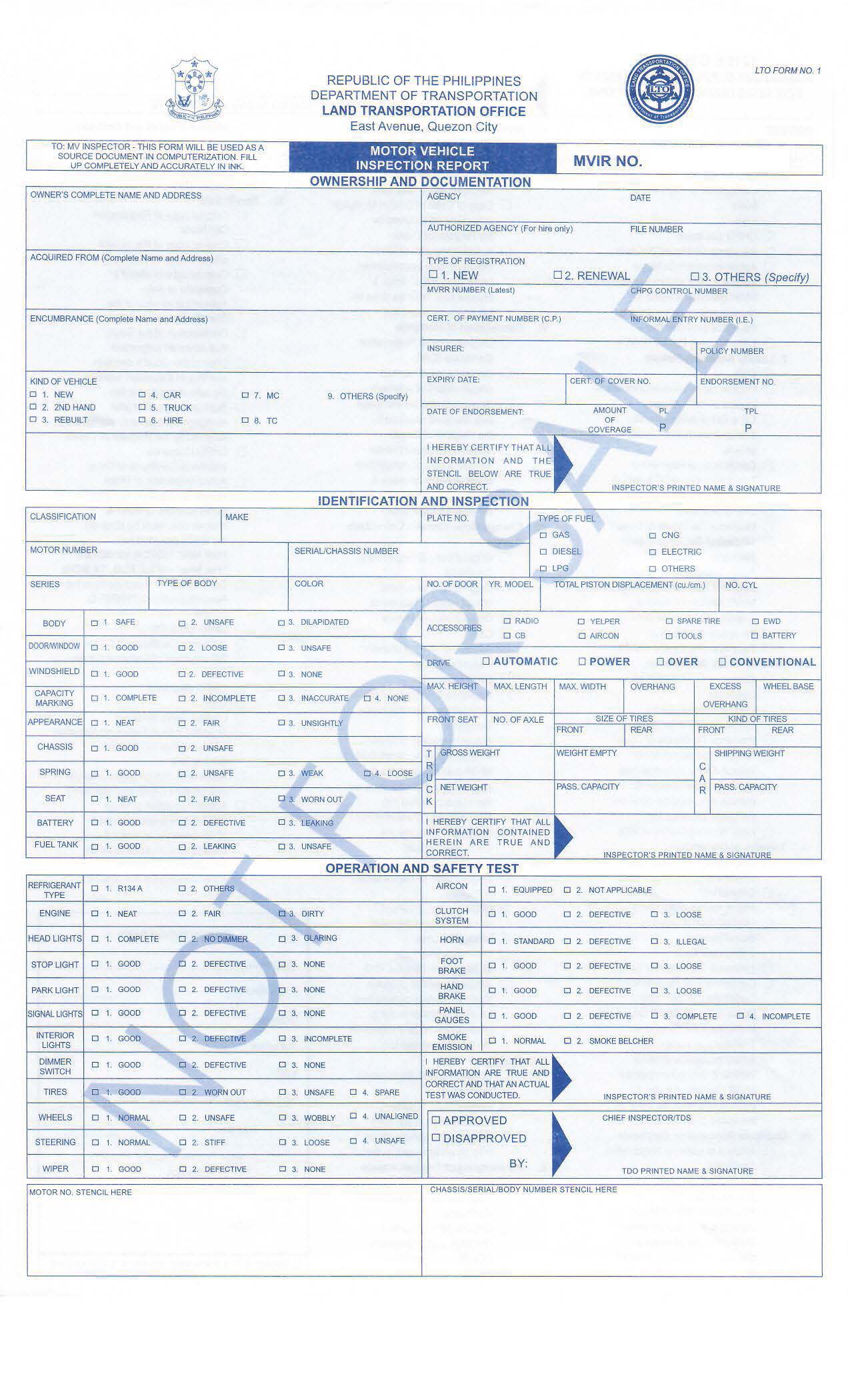Keeping your vehicle roadworthy is one of the basic responsibilities of owning one.
Part of this involves obtaining a Motor Vehicle Inspection Certificate (MVIC), a document that confirms your car meets safety and environmental standards.
Whether you’re renewing your registration or completing a transfer of ownership, the MVIC is a requirement you can’t skip.

What is the MVIC and Who Needs It?
The MVIC is a certificate issued after a thorough inspection of your vehicle.
It verifies that your car meets the government’s standards for road safety and emissions compliance.
This document is mandatory if:
- You are registering a new or second-hand vehicle.
- You are renewing your vehicle registration.
- You are selling or buying a car and completing ownership transfer.
- Your vehicle has been flagged for additional safety or emissions checks.
The fees for this service depend on the type of vehicle and the tests required.
Preparing for the MVIC Process
Before heading to an inspection center, make sure you have these documents ready:
- Original Receipt (OR) and Certificate of Registration (CR) – These are required for registration renewal.
- Proof of Ownership Transfer – If applicable, provide a Deed of Sale or a PNP-HPG clearance.
- Valid Identification – A government-issued ID of the vehicle owner is necessary.
Having all these prepared will help you move through the process quickly.
Motor Vehicle Inspection Report (MVIR) Form
This document is used to record the inspection details of a vehicle, confirming roadworthiness and compliance with safety standards. You can obtain this form from an authorized Motor Vehicle Inspection Center (MVIC) or an LTO office.
To fill it out, provide vehicle details such as ownership, type, make, and condition of parts like brakes, lights, and more. The inspector will mark the appropriate boxes, certifying if the vehicle passes or fails. Make sure all sections are complete and accurate for proper documentation.

Step-by-Step Guide
- Find an Authorized Inspection Center
Visit a Motor Vehicle Inspection Center (MVIC) authorized by the Land Transportation Office.
Locations can be checked online or at your nearest LTO branch.
- Submit the Required Documents
Bring your documents to the reception desk.
Staff will check if everything is complete and in order.
- Pay the Inspection Fee
Once your documents are accepted, you’ll receive a payment order slip.
Proceed to the cashier and settle the fee.
Keep the receipt as proof.
- Present Your Vehicle for Inspection
Drive your vehicle to the inspection lane.
The staff will conduct a series of tests to evaluate your car’s safety and performance.
- Review the Inspection Results
If your car passes, you’ll receive the MVIC and your documents back.
If there are issues, you’ll be given a list of items to fix before a re-inspection.
- Use the MVIC for Vehicle Registration
Take the certificate to the LTO to complete your registration or other transactions.
What Tests Are Included in the Inspection?
The inspection covers both safety and emissions.
Here are the key tests you can expect:
- Emission Test: Measures pollutants in your car’s exhaust.
- Brake Test: Evaluates the braking system’s efficiency.
- Headlight Test: Checks brightness and alignment.
- Sideslip Test: Ensures proper wheel alignment.
- Suspension Test: Assesses the effectiveness of shock absorbers.
- Sound Level Test: Verifies the vehicle’s noise levels.
These tests make sure your vehicle isn’t just in good condition but also safe for public roads.
Tips for a Smooth Process
- Prepare Your Vehicle:
- Fix any obvious issues such as broken lights, worn tires, or unaligned wheels before heading to the center.
- Arrive Early:
- Inspection centers can get crowded, especially during peak months.
- Being early will help you avoid long wait times.
- Keep Your Records Organized:
- Save all receipts and certificates for future use or re-inspection.
Why Is the MVIC Important?
Getting an MVIC isn’t just about following regulations.
It’s a safeguard for you and everyone else on the road.
Here’s what it does for you:
- Promotes Safety: Ensures your vehicle is fit for the road and less likely to cause accidents.
- Avoids Fines: Helps you meet legal requirements to avoid penalties.
- Supports Vehicle Maintenance: Spot potential problems early and address them before they become bigger issues.
What If My Vehicle Fails the Inspection?
Don’t worry if your vehicle doesn’t pass on the first try.
The inspection center will give you a detailed report of the issues.
Fix the listed problems and return for a re-inspection.
If done within the allowed timeframe, re-inspection may not incur additional fees.
How Much Does It Cost?
The inspection fee varies depending on your vehicle type and the tests required.
Generally, fees range from PHP 300 to PHP 1,500.
Check with your chosen inspection center for an exact breakdown.
Final Thoughts
Getting an MVIC is not just a procedural step.
It’s a way to make sure your vehicle is safe for you, your loved ones, and others on the road.
Preparing ahead, following the steps, and addressing any issues promptly will save you time and stress.
By keeping your vehicle in top shape, you contribute to safer and smoother journeys for everyone.